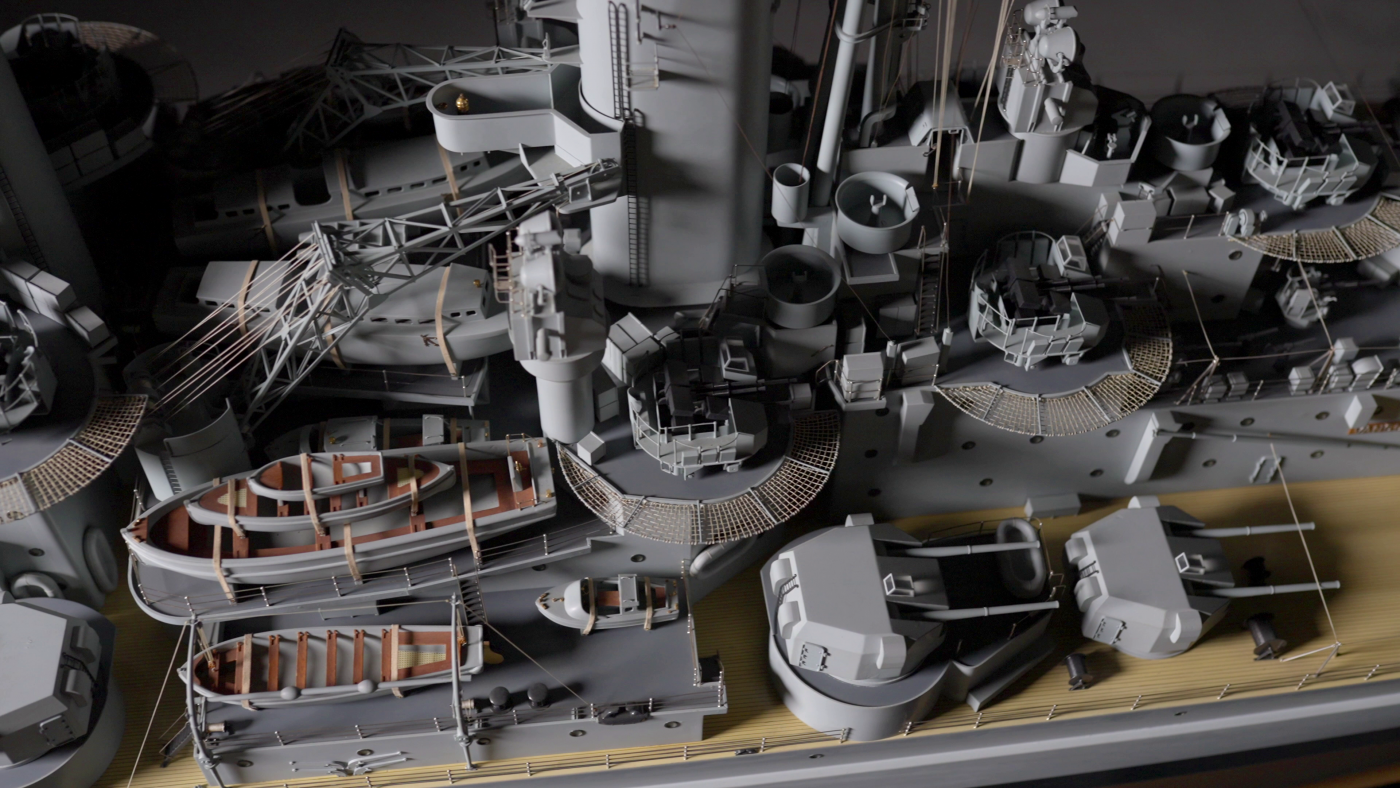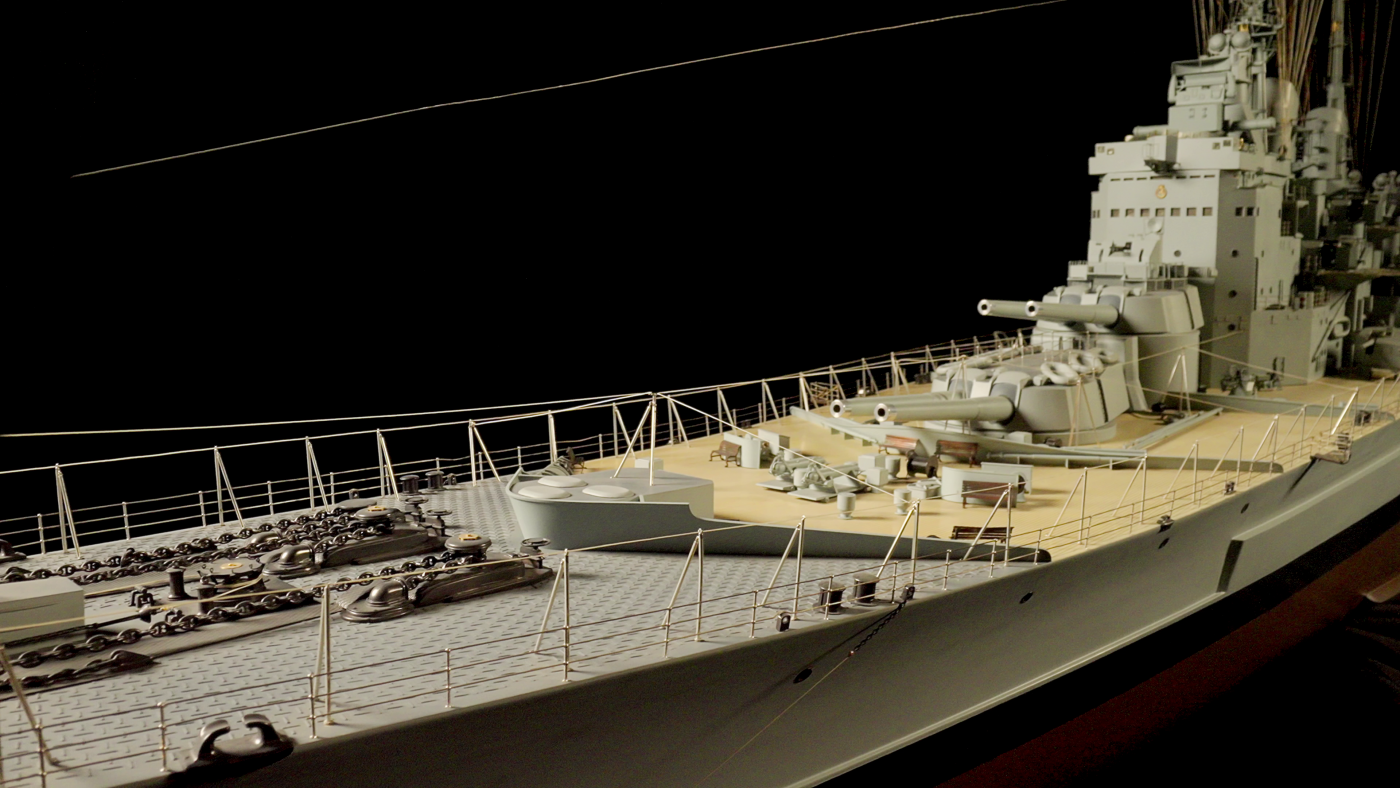Maritime Innovation In Miniature
HMS Vanguard
This is HMS Vanguard, a battleship launched in 1944. The only ship of her class. Displacing more than 44,500 tons, measuring 814 feet long and capable of 35 knots she was the largest and the most sophisticated battleship ever built for the Royal Navy. She was also the last battleship ever built for the Royal Navy.
Vanguard was originally conceived just two months before the outbreak of the Second World War. The size of all previous post-World War One British battleships had been restricted by naval disarmament treaties. The ships were stumpy, cramped, and under gunned. By the time Vanguard was laid down, those restrictions had gone out of the window. She was longer and wider than any previous battleship, clear here in her sweeping long lines and broad beam.
There was also a novel design feature at her stern: Her ‘flat’ stern is called a transom. An experiment in 1922 proved that it improved steaming efficiency and added up to a third of a knot to top speed.
The timetable of her construction was plagued by the pressures of war, but the war was also a crucible for innovation - and Vanguard benefited. With each delay the opportunity was taken to benefit from wartime experience. The large, flared bow helped Vanguard better ride and fight in rough seas. The big, square superstructure had been proven in wind tunnel tests – perhaps surprisingly – to be the most efficient design.
More innovations were less visible but hugely important. Vanguard was the first British battleship with Remote Power Control for her main, secondary and anti-aircraft guns, meaning a gunnery officer could control the aim of the guns from within the armoured citadel. This meant that, for the first time, no one was needed to operate the guns in their turrets. The firing of naval guns had become safer.

Meanwhile, for the crew there was extensive insulation, air conditioning and heating, making Vanguard suitable for service from the Arctic to the tropics. In her accommodation, bunking, replaced hammocks, and a new cafeteria-style mess was introduced, with new, electrical stoves to ensure fewer naked flames reducing fire risks.
These innovations consumed significant amounts of electricity, ensuring that Vanguard received greater generating capacity than any predecessor. She could also carry more fuel than her predecessors. In fact, she had a capacity to sail 9500 miles which meant that she could sail from Britain to Australia without stopping to refuel: a game changer in maritime history.
Her main armament of eight 15-inch guns mounted in twin turrets was a design tested by time to fire huge shells accurately at twice the speed of sound at a target up to 18 miles away. It remained the main armament on major British warships from 1915 to 1959. Her secondary armament was provided by 16 twin-mounted 15 calibre turrets that could elevate to attack targets in the air as well as those on the surface. The safety netting was designed to catch any of the crew who fell off or were blown out of their positions. Her anti -aircraft defences were provided by no fewer than 73 40 mm bofors: an astonishing level of protection supported by the immense armour on her decks and hull, 13 inches deep at its thickest.
On her main gun turrets we can see Carley Floats, common life rafts invented in 1903 and standard until the mid 50s.

Designed as a flagship Vanguard was equipped with state of the art radio communication systems -as well as old-fashioned signal flag halyards.
Vanguard was completed too late to see action in the Second World War but did take part in early exercises of the new N.A.T.O. alliance. In 1955 cost of her upkeep became too great. She was scrapped at Faslane in 1959. The largest battleship ever to be entirely dismantled.
By then the nature of sea power had changed entirely. There was never a ship like Vanguard ever again.

